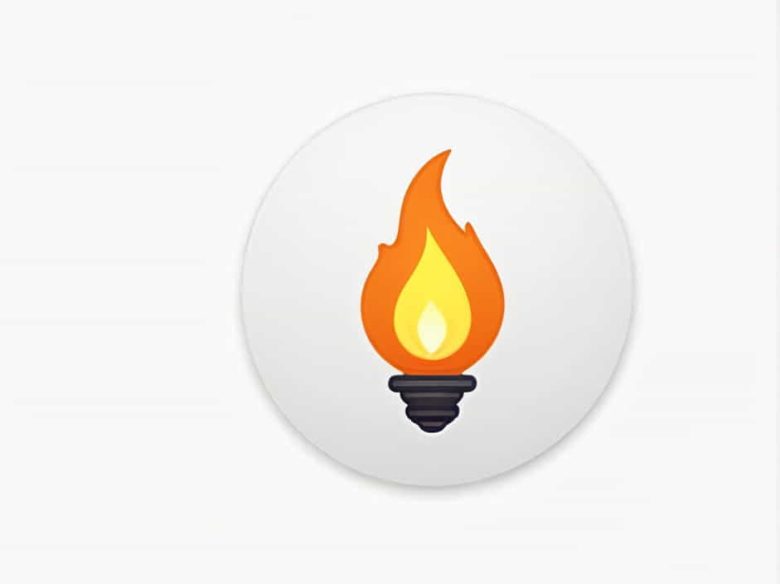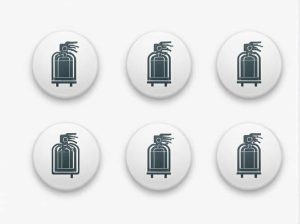Burner flames play a crucial role in heating processes particularly in industrial boilers furnaces and other heat transfer systems. However when burner flames impinge on tubes it can lead to serious issues such as tube overheating material degradation and even catastrophic failure.
Flame impingement occurs when the burner flame directly contacts the tube surface rather than distributing heat evenly through radiation and convection. This issue can significantly impact the efficiency longevity and safety of the system.
In this topic we will explore the causes effects and preventive measures for flame impingement on tubes in heating systems.
1. What Is Flame Impingement?
Flame impingement refers to the direct contact of burner flames with tube surfaces in boilers heat exchangers and industrial furnaces. Instead of transferring heat efficiently the flame overheats the tube causing localized damage and reducing system performance.
Key Characteristics of Flame Impingement:
- Localized overheating in the affected area.
- High-temperature gradients leading to stress buildup.
- Material degradation due to excessive heat exposure.
- Reduced heat transfer efficiency because the flame blocks proper convection and radiation.
2. Causes of Flame Impingement on Tubes
Flame impingement typically results from improper burner operation poor system design or maintenance issues. The most common causes include:
1. Incorrect Burner Alignment
- If a burner is misaligned its flame may not distribute heat evenly and can directly hit the tubes.
- This often happens due to improper installation or adjustments.
2. Excessive Burner Firing
- Overfiring causes flames to extend beyond the intended combustion zone increasing the risk of impingement.
- High fuel flow rates without proper air mixing lead to longer unstable flames.
3. Inadequate Air-to-Fuel Ratio
- An improper air-to-fuel mixture can create incomplete combustion causing longer and cooler flames that can impinge on tubes.
- Insufficient oxygen supply results in a lazy flame that does not disperse properly.
4. Blocked or Damaged Burners
- Clogged or partially blocked burner nozzles can disrupt flame patterns causing unintended flame contact with tubes.
- Dirt dust or fuel deposits can affect burner performance.
5. Poor Boiler or Furnace Design
- If a boiler or furnace is not designed with proper flame clearance there may be limited space for flames to burn efficiently.
- Tube arrangements that place tubes too close to the burner increase the risk of impingement.
6. Malfunctioning Flame Safeguard Systems
- Modern heating systems use flame monitoring sensors to regulate burner operation.
- A faulty flame safeguard system may fail to detect impingement issues allowing damage to occur unnoticed.
3. Effects of Flame Impingement on Tubes
Flame impingement can lead to severe consequences for heating systems including reduced efficiency material damage and even failure.
1. Tube Overheating and Metallurgical Degradation
- Direct exposure to high temperatures can weaken tube metal making it brittle and more likely to crack.
- This can lead to oxidation scaling and structural failure.
2. Reduced Heat Transfer Efficiency
- Flame impingement creates hotspots disrupting even heat distribution.
- This reduces the boiler’s efficiency and increases fuel consumption.
3. Tube Wall Thinning and Burn-Through
- Prolonged exposure causes thermal stress leading to tube wall thinning.
- If untreated it can result in burn-through where the tube wall develops holes or ruptures.
4. Increased Maintenance and Downtime
- Systems with flame impingement require frequent repairs to replace damaged tubes.
- Unplanned downtime due to failures can lead to high operational costs.
5. Safety Hazards
- Tube failure can lead to steam or hot gas leaks posing serious safety risks for workers.
- In extreme cases it may cause boiler explosions or furnace fires.
4. How to Prevent Flame Impingement on Tubes
To avoid costly damage and operational risks it is essential to implement preventive measures to reduce flame impingement.
1. Proper Burner Alignment
- Ensure that burners are correctly positioned and angled to prevent direct flame contact with tubes.
- Use manufacturer-recommended burner placement guidelines.
2. Adjust Air-to-Fuel Ratio
- Maintain an optimal air-to-fuel mixture to ensure complete combustion and stable flame patterns.
- Conduct regular burner tuning to adjust the ratio for maximum efficiency.
3. Use High-Quality Burners
- Invest in low-emission burners that produce short stable flames with better heat distribution.
- Replace damaged or outdated burners to prevent flame instability.
4. Implement Regular Inspections and Maintenance
- Perform routine inspections to check for tube damage burner misalignment or blockages.
- Clean burner nozzles and combustion chambers to ensure proper operation.
5. Monitor Flame Patterns with Advanced Sensors
- Use infrared or ultraviolet flame detectors to monitor burner performance in real time.
- Install thermocouples and temperature sensors on tubes to detect overheating early.
6. Optimize Boiler and Furnace Design
- Ensure that tube spacing and burner placement allow for proper heat distribution.
- Modify designs to include heat shields or refractory materials that reduce the impact of direct flames.
7. Train Operators on Best Practices
- Educate boiler and furnace operators on proper burner operation flame adjustment and troubleshooting.
- Regular training helps prevent human errors that lead to flame impingement issues.
5. What to Do If Flame Impingement Occurs?
If flame impingement is detected immediate action is necessary to prevent further damage.
1. Shut Down the System for Inspection
- If overheating is suspected stop operations and allow the system to cool before inspecting.
- Use thermal imaging cameras to detect hotspots.
2. Assess and Repair Damaged Tubes
- Inspect tube surfaces for signs of discoloration warping or thinning.
- Replace any damaged tubes to restore system integrity.
3. Adjust Burner Settings
- Check burner alignment and flame characteristics.
- Modify fuel and air supply settings to improve combustion efficiency.
4. Reinforce Protection with Refractory Coatings
- Apply protective refractory linings or ceramic coatings to affected areas.
- This helps distribute heat more evenly and reduces direct flame impact.
Flame impingement on tubes is a serious issue that can lead to overheating material failure and reduced efficiency in industrial heating systems. It is caused by improper burner alignment poor air-to-fuel ratios and system design flaws.
By implementing proper burner adjustments regular maintenance and advanced monitoring industries can prevent flame impingement and extend the lifespan of heating systems. Detecting and resolving the issue early can save costs improve efficiency and enhance operational safety.



